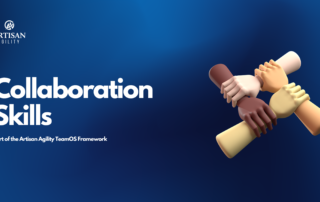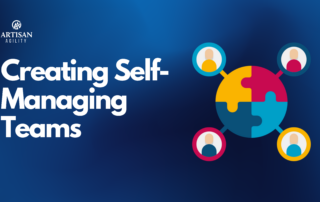Mastering Agile and Scrum with Sierra Agility
This session delves into the core principles of Agile and Scrum and demonstrates how Sierra Agility, our cutting-edge tool, can streamline your processes and enhance team performance. In this webinar, you will: Gain Deep Insights: Discover the foundational principles of Agile and Scrum and how these methodologies drive successful project outcomes. Explore Sierra Agility:
Building Team Foundations
Imagine a team where every member is aligned with a shared purpose, where collaboration flows smoothly, and where goals are not just set but consistently achieved. The “Building Team Foundations” mini-course is your guide to creating that kind of high-performing team. This course is designed to equip you with the tools and frameworks needed
Creating Self-Managing Teams
In the "Creating Self-Managing Teams" course, you'll embark on a journey to transform your team into a high-performing, self-managing powerhouse. This course is designed to equip you with the knowledge and tools necessary to empower your team members, enhance communication, navigate change, and foster a culture of responsibility. By mastering the four essential keys—autonomy,
The Critical Leadership Problems of Summer
In this webinar, Jim Schiel discusses why the summer months have such a profound impact on productivity and what a strong leader can do to counter the effects.
The Leadership Edge
Change Your World...Forever Right now. You can learn the skills you need to transform yourself into a strong, effective leader. You could, in a few weeks, learn everything you need to fully engage your employees motivate and empower your employees create an environment where people can debate and innovate without fear provide what your
Basic Agile and Scrum Fundamentals
Welcome to Artisan Academy's Basic Agile and Scrum Foundations program. In this series of six modules, we want to introduce you to Agile Development and the Scrum Framework. Along the way, we plan to answer many common questions including: What is Agile Development and why does it exist? What is the difference between Agile Development and
Amazing Stories!
Welcome to "Amazing Stories! 1", your essential guide to writing compelling user stories! Brace yourselves because you're about to embark on a transformative journey—one that's designed to turn you into the user story architect your team has been waiting for! Let me be the first to say, "Congratulations!" The fact that you're here with
Advanced ScrumMastering
This program gives you the skills you will need as a ScrumMaster to help your team excel and succeed as a Scrum team. The skills you will learn in this training system can literally change your life. In the Advanced ScrumMastering Training System, lessons will appear in your library at a rate of one











